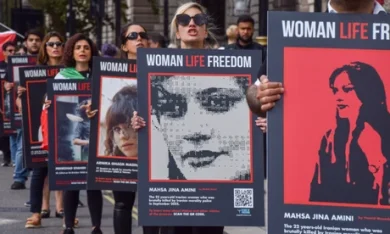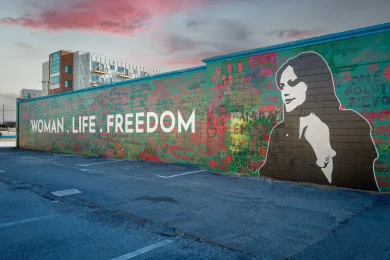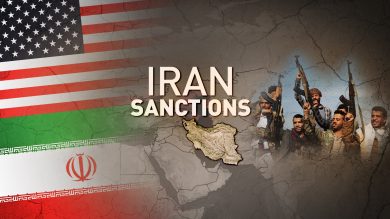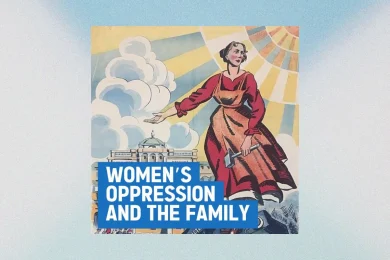In Iran, the Islamic Revolutionary Guard Corps (IRGC) operates not only as a military entity but as the main enforcer of state repression, targeting those who dare to challenge the regime’s authority. Among its primary targets are women journalists and activists, who are relentlessly silenced through arrests, imprisonment, torture, and censorship.
These courageous women play a pivotal role in amplifying voices of dissent, exposing human rights abuses, and advocating for gender equality. Their journalism and activism represent a direct threat to the regime’s narrative control—something the IRGC is determined to suppress.
This opinion piece explores:
• How the IRGC targets women journalists and activists.
• The tactics of fear and control it employs.
• The stories of brave women who have been silenced but refuse to be broken.
• The role of the international community in supporting these women.
1. The IRGC: The Regime’s Tool for Silencing Dissent
A. The IRGC’s Expansive Power
The IRGC was established after the 1979 Islamic Revolution to protect the ideological integrity of the Islamic Republic. Over time, it has evolved into:
• A military force controlling Iran’s missile and nuclear programs.
• A business empire dominating major sectors of Iran’s economy.
• The chief enforcer of political repression, overseeing the arrest, torture, and execution of dissenters.
When it comes to media freedom and women’s rights, the IRGC ensures the regime’s narrative remains unchallenged by silencing journalists and activists who threaten its grip on power.
B. Why Women Journalists and Activists Are Targeted
Women are specifically targeted because they:
• Challenge patriarchal norms central to the regime’s ideology.
• Expose gender-based violence and state oppression.
• Act as messengers, connecting Iranian struggles with global audiences.
• Document abuses, including those perpetrated by the IRGC, undermining its control of information.
In the eyes of the regime, a woman who speaks freely is a threat that must be silenced.
2. Tactics of Repression: How the IRGC Silences Women
A. Arrests and Imprisonment
The IRGC’s Intelligence Unit frequently arrests women on vague charges such as:
• “Propaganda against the state.”
• “Acting against national security.”
• “Insulting the Supreme Leader.”
These charges lead to:
• Long prison sentences without fair trials.
• Detention in notorious prisons like Evin and Qarchak, where torture and abuse are common.
• Incommunicado detention, where families and lawyers are denied access.
B. Torture and Sexual Abuse
In IRGC-controlled prisons, torture is routine:
• Beatings, electric shocks, and sleep deprivation are used to extract false confessions.
• Sexual violence is employed as a weapon of humiliation and control, especially against women who defy traditional gender roles.
• Psychological abuse, including threats to harm family members, is designed to break the will of detainees.
C. Forced Confessions and Public Humiliation
• The IRGC broadcasts forced confessions of women on state-controlled media to discredit them publicly.
• These confessions, extracted under torture, often include fabricated claims of ties to foreign governments or espionage.
• The goal is to turn public opinion against these women and justify further repression.
D. Digital Surveillance and Censorship
• The IRGC’s Cyber Unit tracks social media activity, hacks accounts, and monitors communications.
• Internet shutdowns during protests prevent women from sharing real-time updates with the world.
• Journalists working with foreign media face harsh sentences, accused of “spying” or “spreading lies.”
Despite these efforts, digital resistance continues, with Iranian women journalists and activists using encrypted apps and global platforms to bypass censorship.
3. Stories of Courage: Women Silenced but Not Broken
A. Narges Mohammadi: The Unyielding Voice
Narges Mohammadi, a human rights activist and Nobel Peace Prize laureate, has spent years in IRGC-run prisons for:
• Exposing state violence against protesters.
• Campaigning against the death penalty in Iran.
• Writing about the conditions of women in Iranian prisons.
Despite facing torture, solitary confinement, and health deterioration, Narges continues to speak out from behind bars. Her courage has become a symbol of defiance.
B. Nasrin Sotoudeh: Defender of the Silenced
Nasrin Sotoudeh, a human rights lawyer, has been repeatedly arrested for:
• Defending women who removed their hijabs in public.
• Challenging the Iranian judiciary’s discriminatory laws.
• Refusing to comply with gender segregation in courtrooms.
Sentenced to 38 years in prison and 148 lashes, Nasrin’s case illustrates the IRGC’s brutality toward women who fight for justice. Yet, her determination remains unshaken.
C. Masih Alinejad: The Digital Rebel
Masih Alinejad, an Iranian journalist living in exile, runs #MyStealthyFreedom, a campaign encouraging women to share photos without hijab:
• The IRGC has plotted to kidnap and assassinate her, highlighting her influence.
• Despite threats, Masih continues to expose the regime’s abuses through social media, connecting Iranian women’s struggles with a global audience.
• She represents the power of digital activism in an age where authoritarian regimes try to control narratives.
D. Sepideh Gholian: Fearless in the Face of Fear
Sepideh Gholian, a journalist and labor rights activist, has faced:
• Multiple arrests for covering workers’ protests.
• Torture, forced confessions, and harassment by the IRGC.
• After her release, she boldly chanted anti-regime slogans in front of Evin Prison, a move that led to her re-arrest.
Her story reflects the unbreakable spirit of Iranian women, who continue to resist, even when the price is their freedom.
4. Digital Resistance: Fighting for Freedom Online
A. Social Media as a Weapon of Truth
Social media platforms like Instagram, Twitter, and Telegram have become essential tools for Iranian women:
• Hashtags like #WomenLifeFreedom, #MahsaAmini, and #FreeIranianWomen amplify their voices.
• Citizen journalism, where women share videos of protests and state violence, bypasses IRGC censorship.
• Exiled journalists play a key role in sharing news, ensuring global audiences remain informed.
B. IRGC’s Cyber Tactics and Digital Crackdowns
The IRGC attempts to control digital spaces through:
• Cyberattacks on journalists and media organizations.
• Internet blackouts during protests to disrupt communication.
• Fake news campaigns designed to discredit activists and spread state propaganda.
However, Iranian women’s digital resistance continues to thrive, showing that truth cannot be completely silenced.
5. Global Solidarity: How the World Can Help
A. Designate the IRGC as a Terrorist Organization
• The United States already designates the IRGC as a terrorist group due to its involvement in human rights abuses and terrorism sponsorship.
• Other governments, especially in Europe, must follow, cutting off the IRGC’s international financial networks and limiting its global influence.
B. Demand the Release of Imprisoned Women
• International human rights organizations must demand the immediate release of all women journalists and activists detained by the regime.
• Global campaigns, similar to those supporting Narges Mohammadi and Nasrin Sotoudeh, must continue until these voices are freed.
C. Provide Safe Platforms and Asylum
• Tech companies must ensure secure communication tools are available to Iranian activists, protecting them from IRGC surveillance.
• Governments should provide asylum and protection for those forced to flee, enabling them to continue their activism in safety.
D. Amplify Iranian Voices
• Media organizations worldwide must prioritize the stories of Iranian women, highlighting their role in fighting for freedom.
• Academics, writers, and artists must continue to use cultural platforms to raise awareness.
Conclusion: Voices That Refuse to Be Silenced
The IRGC’s mission to silence Iranian women journalists and activists has failed because courage cannot be caged. These women, through their words, actions, and sacrifices, have become the voice of a nation that refuses to be silenced.
Join Our Newsletter!
Stay informed with the latest updates, news, and ways to take action in the fight for justice and global security. Sign up now to get updates delivered straight to your inbox!





